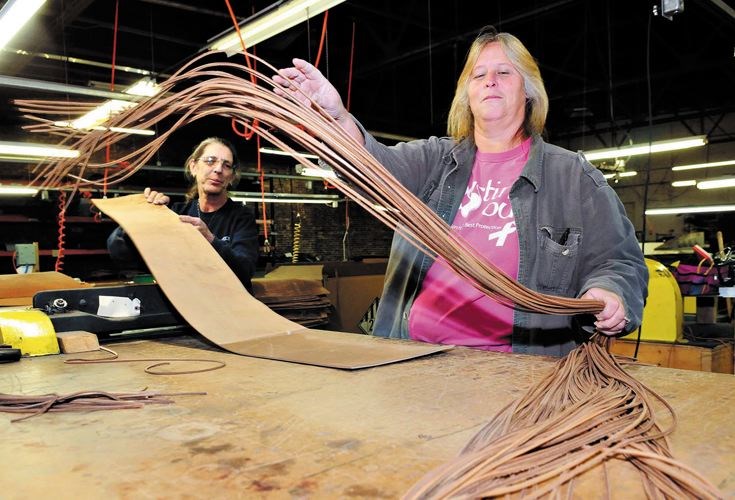The history of the shoelace is inextricably bound with the history of the shoe.
When the first shoes were worn is lost to pre-history but we do know it was more than 7,500 years ago as that is the age of the earliest shoe discovered by archeologists. It consists of little more than a large piece of leather, lined with holes around its perimeter, and laced to fit snuggly around the foot.
By 5,300 years ago, this simple form of shoe had advanced significantly as Otzi the Iceman was found wearing shoes. These were made out of a combination of deerskin and bearskin, with shoelaces made from hemp. Hemp was also used to line the interior of the shoe. That his shoes remained on his feet while he was freezing to death in the Swiss Alps is a testimony to the craft put into making them.
Ancient Greek and Roman shoes consisted of moccasin-like open toed sandals bound to the foot and leg by leather lacing. Similar footwear was worn by the elite throughout much of the ancient world.
During the middle ages, leather straps and buckles were introduced as a method to more securely fasten footwear. It is still used today for different types of footwear, including many ladies shoes.
But to properly secure the foot in a shoe, nothing is better than utilizing a good old fashion shoelace.
With the exception of the aglet, they have remained pretty much the same for thousands, if not tens of thousands, of years.
Of course, there remains one major issue with shoelaces: how to keep them tied up.
Tying shoelaces might not sound like a major concern. Unless it causes someone to slip or trip, a shoelace coming undone is more of an annoyance than a tragedy.
But tying knots is a major subject of scientific investigation. Indeed, there is a whole sub-discipline of mathematics called knot theory which studies knots both real and theoretical.
Knots show up in many places - from the molecular twists and turns of proteins and DNA to the massive knots holding a ship at dock or cargo at bay. I used to climb in caves and ensuring our ropes were properly knotted was a major concern.
Hanging a hundred feet in the air is the wrong time to find out your knot is slipping.
Another place knot tying is critical is in surgery. Surgical sutures are a major area of investigation from a pragmatic point of view. But of all the knots we tie, the shoelace knot has been relatively under-studied.
A recent paper in the Proceedings of the Royal Society A - Mathematical, Physical, and Engineering Sciences entitled The Roles of Impact and Inertia in the Failure of a Shoelace Knot sets out to change that. The authors sought to provide some insights into what makes a good shoelace knot and why some knots fail.
It is a paper which might be dismissed at first glance or considered a candidate for an Ignoble Prize. Instead, it provides a thoughtful analysis and the first steps to understanding the core of the issue.
The most critical finding is tying a bow with a square knot instead of a granny knot (right-over-left then left-over-right and not right-over-left and right-over-left again) significantly decreases the likelihood a knot will come undone. In some of their tests, they were able to induce 100 per cent failure in granny knots but less than a 50 per cent failure rate in square knots.
The most obvious reason behind this is the twisting inherent in a granny knot. The bows end up at right angles to the laces as a result of the orientation of the second layer of the knot. This results in a decrease in surface contact between adjacent laces, reducing friction.
The result is more lace slippage per tug or impact.
The other critical factor was the relative length of the bows to the string or dangling end of the lace.
As the foot moves throughout its range of motions, the swing in either portion of the laces can induce movement throughout the entire knot. The inertia carried by the laces as the heel impacts the ground is a major source of lace slippage.
Essentially, as the heel hits the ground, the foot is forced into the centre of the knot causing strain which is then released. At the same time, the swinging lace ends and bow cause a small, but measurable, slippage of the portion of the lace passing through the knot.
As a critical point is reached, the momentum overcomes resistance and the loop unravels.
This problem is exacerbated by the round laces typically found in hiking boots and men's dress shoes. And while the authors did not provide any specific shoe tying recommendations, flat laces and square knots would appear to be the way to go.
Either that or Velcro.



